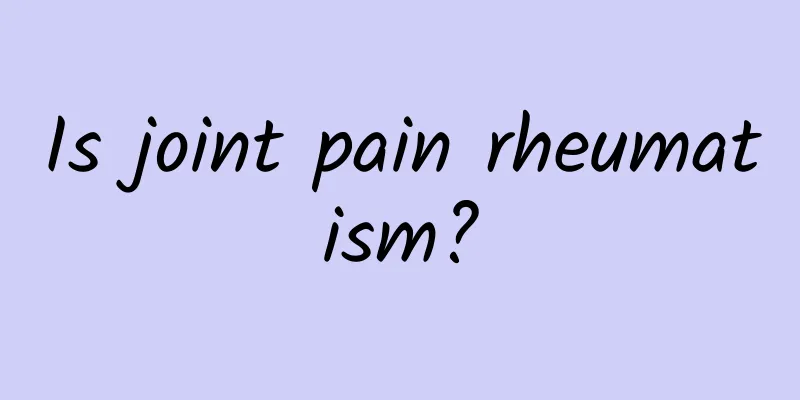Heart stents cannot be a permanent solution. If you reduce the dosage at will, the blood vessels may become blocked again.

|
Lao Wang was admitted to the Department of Cardiology again, preparing for a heart stent surgery because of severe coronary artery stenosis and frequent angina attacks. In fact, Lao Wang had just had two stents implanted in his heart 10 months ago, but less than a year later, he was "reentered" for the second time. The doctor asked Lao Wang if he had been taking the aspirin and clopidogrel that he had been told to take when he was discharged from the hospital. Lao Wang hesitated and answered that he had only taken aspirin for 2 months because he had heard that aspirin would affect blood coagulation and hurt the stomach. The doctor told him that it was because he had stopped taking the wrong medicine that his blood vessels were blocked again. 1. Stent surgery is not a permanent solution Many patients with coronary heart disease have the same idea as Lao Wang, thinking that after a heart stent is placed, the symptoms of angina pectoris disappear and the disease is cured. But in fact, heart stent surgery is not a permanent solution, it just replaces an uncontrollable, higher risk with a controllable, lower risk. Heart stent surgery is to use metal stents to open narrow blood vessels. However, stents are also a foreign body to the human body, which can stimulate platelet aggregation and form blood clots. Therefore, before the vascular endothelium is covered with a stent, two antiplatelet drugs are needed for "dual anti" treatment, which usually takes about 1 year. After that, one antiplatelet drug is used to maintain long-term treatment. 2. You cannot stop taking core medications when treating coronary heart disease. A heart stent can only solve the stenosis of one blood vessel, but coronary heart disease can affect multiple blood vessels at the same time, and it is impossible to stent all of them. During the operation, the doctor will select the blood vessel with the most severe stenosis and the greatest impact on the heart to place the stent. For other blood vessels that are not so serious for the time being, drugs are needed to control the progression of the disease. The first core drug for treating coronary heart disease is statins, which can inhibit the production of cholesterol and reduce the level of low-density lipoprotein cholesterol (LDL-C). It can not only inhibit the progression of the disease, but also inhibit inflammatory and oxidative reactions, improve the metabolism of the arterial lining, stabilize plaques, reduce the size of plaques, and achieve the effect of reversing plaques. However, even if the plaque volume is reduced, the plaque will still exist. With the current medical level, coronary heart disease is still an incurable disease. Statins need to be taken continuously to control the risk of the disease, and they cannot be stopped. The second core medication for coronary heart disease is antiplatelet drugs represented by aspirin, because plaques persist and there is still a risk of rupture. Only by taking medication continuously to inhibit the formation of new platelets can we inhibit platelet aggregation when plaques rupture, prevent the formation of thrombus, and avoid myocardial infarction. 3. Don’t stop taking medicines to control the primary disease. Coronary heart disease does not develop for no reason. It is usually caused by long-term uncontrolled hypertension, diabetes, hyperlipidemia, smoking and other factors. Therefore, people with related underlying diseases need to use medicines to treat the underlying diseases in addition to stabilizing plaques and preventing plaque rupture. Patients with coronary heart disease should strictly quit smoking and control their blood pressure at around 130/80 mmHg; control the low-density lipoprotein cholesterol (LDL-C) in blood lipids to below 1.8 mmol/L; control fasting blood sugar to below 6.1 mmol/L, and control blood sugar 2 hours after a meal to below 11.1 mmol/L. These chronic diseases cannot be completely cured and also require continuous medication to control and cannot be stopped. In summary, after suffering from coronary heart disease, heart stent surgery cannot solve the problem once and for all. After the surgery, the "dual-antibody" treatment time must meet the standard to avoid re-stenosis in the stent due to insufficient medication. The medication needs to be used under the guidance of a doctor. If you have any questions about the medication, you should consult a doctor or pharmacist, and you cannot stop or change the medication without authorization. I am pharmacist Huazi, welcome to follow me and share more health knowledge. |
<<: When is the best time to drink Pu'er tea? What color is Pu'er tea?
>>: Is Pu'er tea acidic or alkaline? Why does Pu'er tea have white foam when it is brewed?
Recommend
What should I do if I have breast hyperplasia?
I believe that many female friends who work in la...
Which online ride-hailing app can I use with one year of driving experience? Is online ride-hailing really profitable?
The online car-hailing industry has been very pop...
What is the cause of uterine prolapse on B ultrasound
Gynecological diseases are becoming more and more...
Facebook earnings report: Facebook's global monthly active users have reached 955 million
Facebook's latest financial report shows that...
Can gynecological diseases cause back pain?
In life, many people experience back pain during ...
Take care of your hearing and don’t be a descendant of the deaf
March 3, 2022 is the 23rd "National Ear Care...
Will women get fat by eating protein powder?
Protein powder is a nutritional supplement that m...
There is a fleshy lump inside the vagina
If there are many lumps of flesh growing at the v...
What are the benefits of taking royal jelly during menopause?
Royal jelly is a common food in our lives and can...
Is it good to drink brown sugar water after medical abortion?
The body of a woman who has a medical abortion is...
This muscle is not simple, it is very good at compressing nerves
Author: Chen Yin Shenzhen Traditional Chinese Med...
What does daffodil mean? Do daffodils need to be watered and the water changed every day?
Narcissus has a history of more than 1,000 years ...
Can I have double eyelid surgery during my period?
Women cannot have double eyelid surgery during me...
What causes brown vaginal discharge during lactation?
Leucorrhea is a normal secretion of women, and ob...









